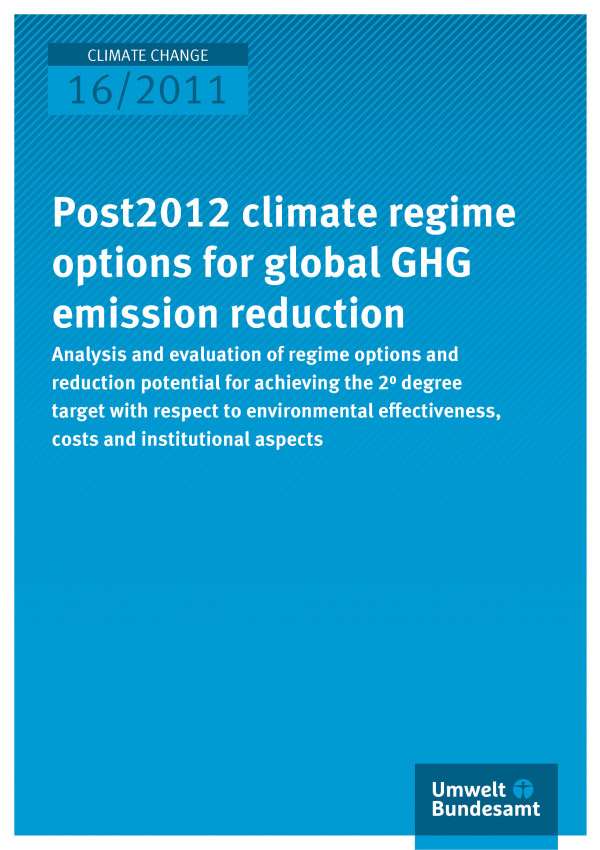Global carbon dioxide emissions need to be reduced by at least 50 to 85 % in 2050 compared to 2000 levels to limit global surface temperature increase to 2°C compared to preindustrial levels (IPCC 2007). As an intermediate greenhouse gas emission reduction target for industrialized countries in 2020, the IPCC (2007) confirmed a range of 25 % to 40 % compared to 1990, together with a substantial deviation from baseline in some developing regions, which was quantified as reductions in the range of 15 % to 30 % below baseline (den Elzen and Höhne 2008). While the climate summit in Copenhagen (COP 15) failed to come up with an international agreement involving binding greenhouse gas emissions reduction targets, under the Copenhagen Accord (UNFCCC 2009) most Annex I countries pledged quantifiable emission reductions. Similarly, several developing countries submitted nationally appropriate mitigation actions (NAMAs).

Climate | Energy
Post2012 climate regime options for global GHG emission reduction
Analysis and evaluation of regime options and reduction potential for achieving the 2° degree target with respect to environmental effectiveness, costs and institutional aspects
Series
Climate Change | 16/2011
Number of pages
87
Year of publication
Author(s)
Katja Schumacher, Jakob Graichen, Sean Healy, Joachim Schleich, Vicki Duscha, Everett B. Peterson
Abstract
Further files
Language
German
Project No. (FKZ)
3708 41 102
Publisher
Umweltbundesamt
File size
3812 KB
Price
0,00 €
Print version
not available
rated as helpful
2228

